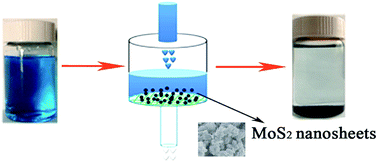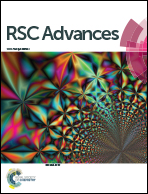Equilibrium and kinetic studies on MB adsorption by ultrathin 2D MoS2 nanosheets†
Abstract
MoS2 sheets, graphene-like two-dimensional materials, show application potential in optoelectronics and biomedicine due to their unique properties. However, the environmental influence of such 2D materials remains to be unveiled. Here we report that MoS2 ultrathin nanosheets synthesized by a hydrothermal process display remarkable selective removal of Methylene Blue (MB) from aqueous solution, showing the maximum adsorption capacity reached up to 146.43 mg g−1 within only 300 seconds. The kinetics and equilibrium of the adsorption process were found to follow the pseudo-second-order kinetic and Freundlich isotherm models, respectively. More importantly, MoS2 nanosheets can be readily cleaned for reuse by washing with deionized water. This work demonstrates that the resulting MoS2 nanosheets may be considered as highly efficient and green adsorbents for eliminating MB from aqueous solution.

- This article is part of the themed collection: 2D Materials: Explorations Beyond Graphene

 Please wait while we load your content...
Please wait while we load your content...